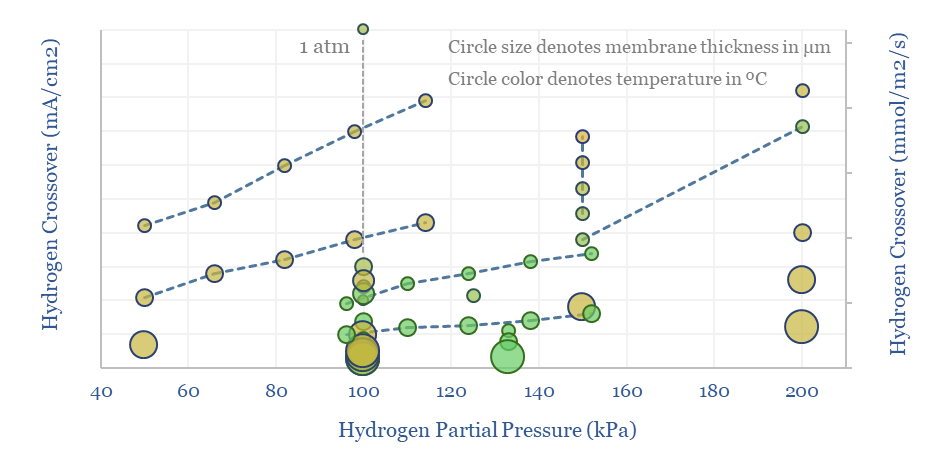
Perfluorinated sulfonate (PFSA) membranes, such as Nafion, are the crucial enabler for PEM electrolysers, fuel cells and other industrial processes (e.g., chlor-alkali plants). The market is worth $750M pa. The…
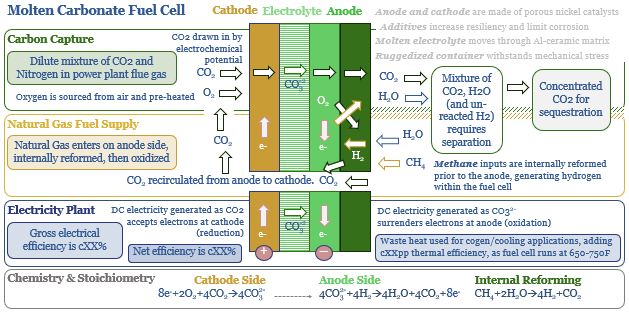
Molten carbonate fuel cells (MCFCs) could be a game-changer for CCS and fossil fuels. They are electrochemical reactors with the unique capability to capture CO2 from the exhaust pipes of…
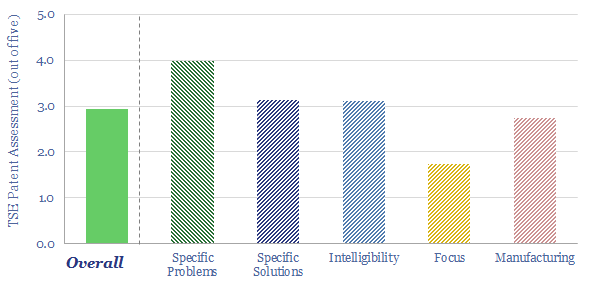
…electrolysers and fuel cells, underlying catalyst materials, membranes and their manufacturing. One patent seems like a breakthrough. Other patents candidly presented challenges for scaling up green hydrogen and raised questions…
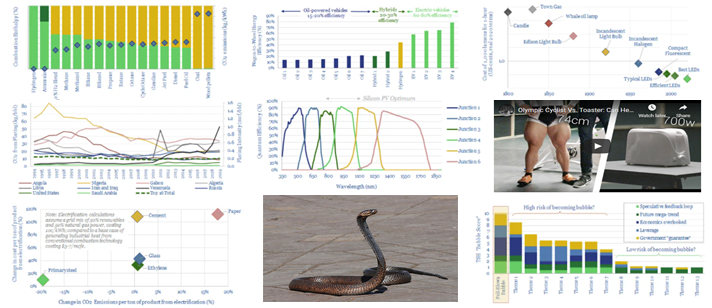
…is generated. This is one factor that hurts our hydrogen economics below, and it has nothing to do with the costs of electrolysers or fuel cells, but basic laws of…
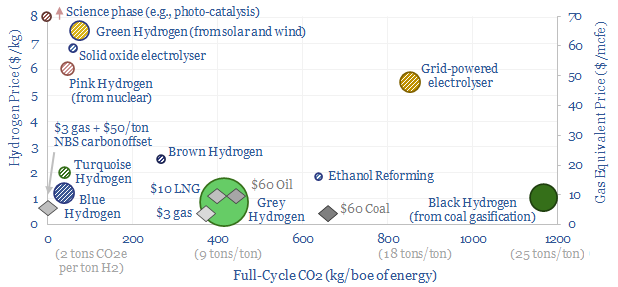
…note on green hydrogen, we recommend this one). (6) Operations, transport, logistics all feel strangely challenging. Our studies of patents suggest that electrolysers and fuel cells can be the Goldilocks…
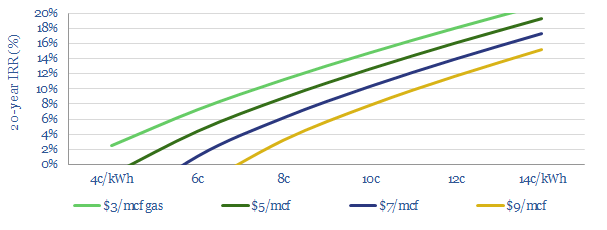
…of oxycombustion power cycles will compete with smaller-scale CHPs and fuel cells. Fuel cells have historically had high decline rates, averaging 5% per year, but recent fuel cells are slowly…
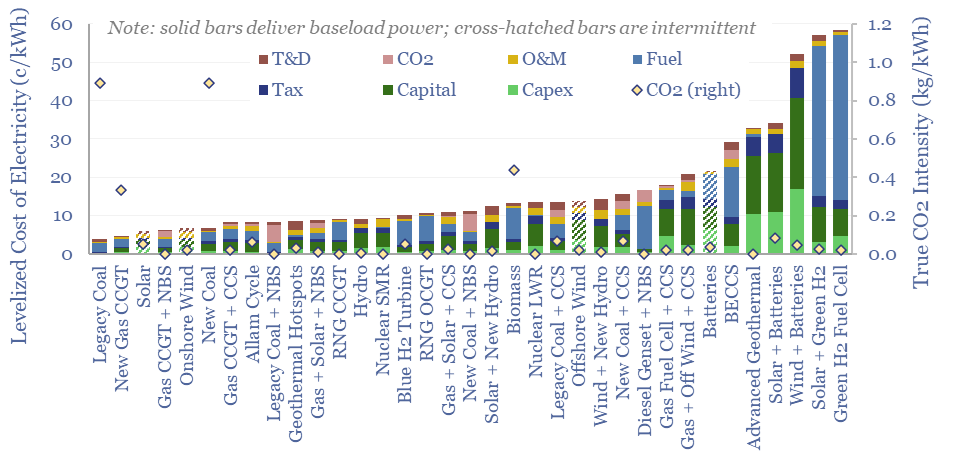
…economic models calculating the specific levelized costs of onshore wind, offshore wind, solar, hydro, nuclear, gas power, coal power, biomass, RNG, diesel gensets, geothermal, hydrogen, fuel cells, power transmission, batteries,…
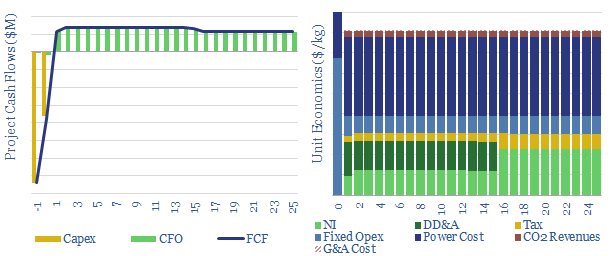
…such as a fuel cell or fuel cell vehicle. A more recent question mark has arisen over the degradation rates of electrolysers, if they are powered by wind and solar…
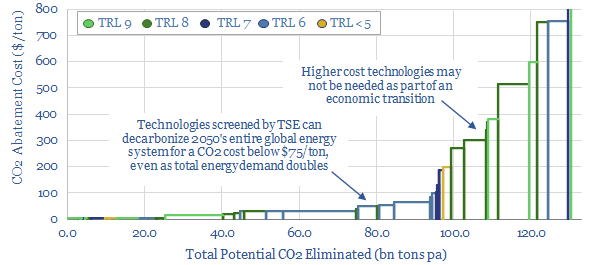
…Combustion (July-2020, 19-pages) Molten Carbonate Fuel Cells: what if carbon capture generated electricity? (Feb-2020, 27-pages) LNG in transport: scaling up by scaling down? (May-2019, 20-pages) Do methane leaks detract from…
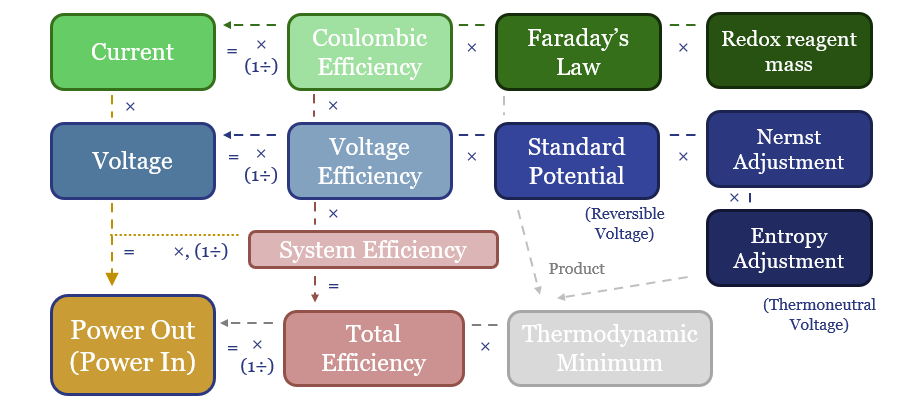
…energy transition, if the world is to reach net zero, 250-years after Volta’s invention! This includes all batteries, electric vehicles, electrolysers, fuel cells, electrowinning plants. In our travels through the…










